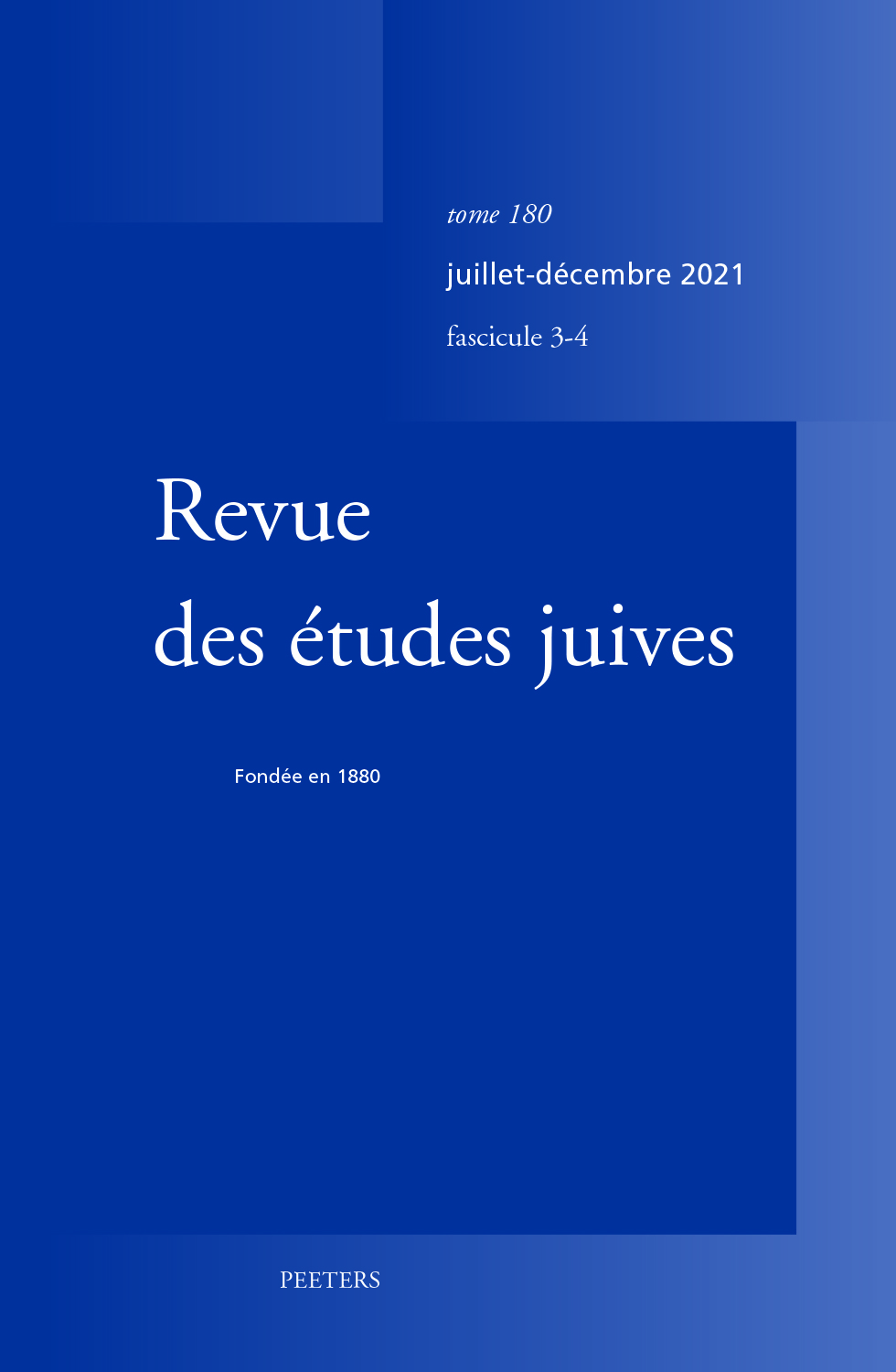 previous article in this issue previous article in this issue | next article in this issue  |

Preview first page |
Document Details : Title: Rashbam's Major Principles of Interpretation as Deduced from a Manuscript Fragment Discovered in 1984 Author(s): JACOBS, Jonathan Journal: Revue des Études Juives Volume: 170 Issue: 3-4 Date: juillet-décembre 2011 Pages: 443-463 DOI: 10.2143/REJ.170.3.2141802 Abstract : More than twenty years ago, Moshe Sokolow published some new fragments of Rashbam’s commentary on the Torah, based on manuscripts. At that time, little attention was paid to this revelation. In this article I would like to revisit parts of these fragments and address their role, significance and considerable importance in understanding Rashbam’s exegetical approach. Contrary to the prevailing view, I believe that these sections are not actually part of Rashbam’s commentary on the Torah. The principal reason for this assumption is the sharp language with which Rashbam attacks Rashi, in contrast to his usual custom throughout his biblical commentary. I believe that the document is a polemical letter that Rashbam sent to one of his students who sought to clarify the difference between his literal (peshat) style of interpretation and the literal interpretations of his predecessors. In order to sharpen this difference, Rashbam engaged in literary disputation against two of Rashi’s interpretations. This polemic grants us a resource which is nowhere to be found in his commentary on the Bible: an explicit definition of his exegetical approach. Within the framework of his polemic, Rashbam defines — for the first time in an orderly and clear manner — the principles that form the basis of his literal style of interpretation. Examination of the content of the two arguments and of the terminology adopted by Rashbam, helps us to understand the three criteria that he uses in explaining the literal level of the text: the ‘way of the world’, the context of the verses, and logic. Il y a plus de vingt ans, Moshe Sokolow publiait de nouveaux fragments du commentaire de Samuel ben Meïr sur la Torah à partir de manuscrits. Les chercheurs prêtèrent alors peu d’attention à cette découverte. Dans le présent article, je me propose de réétudier des parties de ces extraits et d’analyser leur rôle, leur signification et leur importance pour la compréhension de l’exégèse de Rashbam. À mon avis et contrairement à l’opinion qui prévaut, ces extraits ne font pas partie de son commentaire sur la Torah. La raison principale en est l’âpreté des mots employés par Rashbam pour critiquer Rashi, un fait inhabituel dans son commentaire biblique. Ce document est probablement une lettre polémique envoyée par Rashbam à l’un de ses élèves qui souhaitait comprendre ce qui différencie sa méthode interprétative (peshat) de celle de ses prédécesseurs littéralistes. En engageant une discussion autour de deux interprétations de Rashi, Rashbam expose sa démarche exégétique et énumère, pour la première fois d’une manière claire et systématique, les principes qui la sous-tendent. L’analyse du raisonnement et l’étude de la terminologie adoptée par Rashbam permet de mieux comprendre les trois critères auxquels doit répondre l’interprétation littérale du texte: le derekh ereṣ (litt. «voie de la terre» — c’est-à-dire, le cours habituel des choses), le contexte et la logique. |
|


